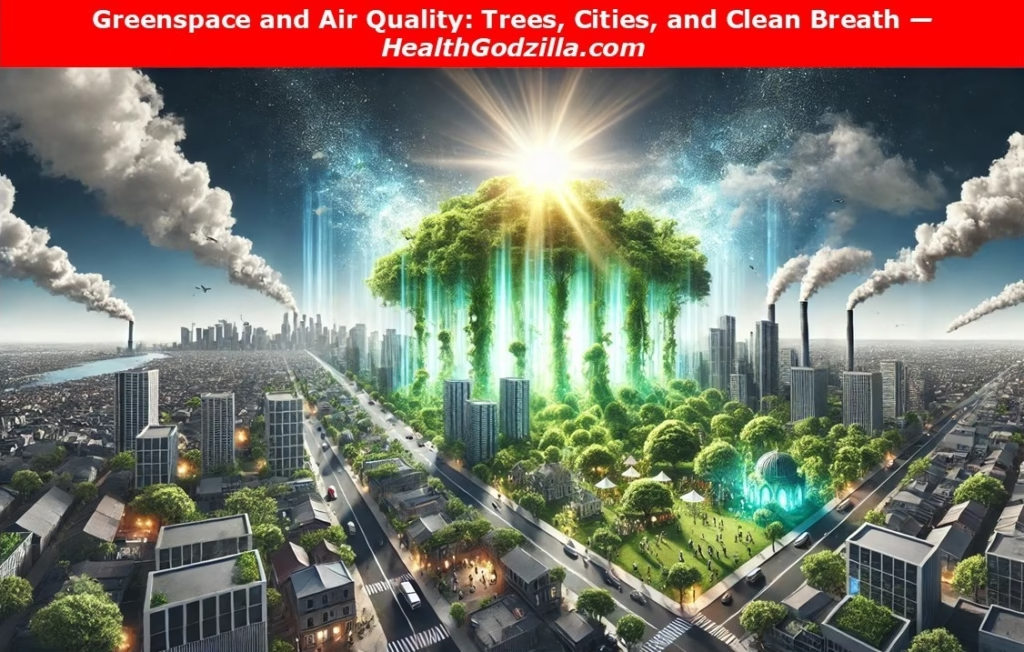
Greenspace and air quality are not distant themes of policy—they are the breath beneath our daily lives. The air we breathe, often taken for granted, is a silent battleground where pollutants threaten human health. Trees stand as our allies amid this struggle, weaving protective canopies over cities and offering relief through transpiration, cooling, and purification.
In urban landscapes, trees do more than merely beautify; they transform the air by releasing moisture, reducing temperatures, and mitigating oppressive heat. Their shade eases the strain on air conditioning, bringing respite to people and machines. This relief transcends comfort—it can save lives. For example, trees in the United Kingdom prevent premature deaths each year by filtering pollutants such as sulfur dioxide (SO₂) and particulate matter (PM₁₀). In Atlanta, trees remove 64.5 metric tons of particulate matter annually, silently protecting urban health and saving lives—a testament to their unseen efforts.
Beyond cooling and purification, trees calm the winds that transport pollutants, modulating the restless air that moves through city streets. Yet, this balance is delicate; dense canopies can sometimes trap wind and hinder pollutant dispersion. This dynamic highlights the complex dance between trees and the air we breathe. As trees capture carbon dioxide and release oxygen, they also absorb harmful compounds such as ozone (O₃), nitrogen dioxide (NO₂), and sulfur dioxide, capturing pollutants through their stomata or washing them away with rain. However, these particles can accumulate during dry periods and potentially reenter the atmosphere.
Scientific debates on greenspace and air quality, such as those conducted in China, reveal the profound benefits of vegetation when density surpasses a certain threshold. Trees, however, are living organisms with unique traits. In response to stress, they may emit volatile organic compounds (VOCs), which can contribute to ozone formation under specific conditions. Careful species selection—favoring those with low VOC emissions—mitigates this challenge and maximizes trees’ positive impact.
Our bond with greenspaces is one of hope and symbiosis. Trees purify and protect, but their survival and efficacy rely on collective stewardship. By uniting forests and communities, we can reshape cities, enhancing health, breath, and our collective future.
☀️🌳 The Dual Role of Trees in Urban Heat Islands
However, balancing these benefits with potential drawbacks—such as altered wind patterns and localized heat retention—demands thoughtful planning. In Singapore, for instance, community-driven initiatives and strategic green planning have created an innovative model of urban greenery. By blending dense canopies with open corridors, the city maximizes cooling while preserving airflow. This intentional design shows how community engagement and localized strategies can improve greenspace and air quality, transforming urban heat islands into havens of resilience.
🌵 Cooling the Desert Heat: A Case from Phoenix
In sun-scorched Phoenix, Arizona, researchers have found that neighborhoods with dense tree cover can be several degrees cooler than areas with sparse greenery. Shade from the canopies reduces surface temperatures by blocking solar radiation, allowing families to walk, children to play, and machines to rest from the heat. Cooler streets and buildings also reduce energy demand, easing pressure on air conditioning systems and cutting utility costs.
Yet this story has layers. Trees, while cooling, can also trap heat. Their leaves slow wind movement, reducing the breeze that helps carry away warmth and disperse pollutants. In narrow urban corridors, high-density canopies may insulate rather than ventilate—intensifying local heat and disrupting airflow. This complex interplay between greenspace and air quality reveals how design can either mitigate or magnify environmental stressors in cities.
🧭🌴 Singapore’s Strategy: Balance by Design
In Singapore, planners address this duality with care. Known for its lush greenery, the city combines tree-lined walkways with open spaces to balance shade and wind. This mix helps reduce temperatures while allowing heat and pollutants to escape. By tailoring greenspace to the local climate and city structure, Singapore demonstrates how tree placement can shape urban microclimates without unintended consequences.
Ultimately, trees’ role in urban heat islands depends on placement, purpose, and context. When designed with intention, they become champions of urban cooling. When overlooked, they may inadvertently amplify the very heat they seek to tame. The story of trees is not just about shade—but about airflow, adaptation, and equilibrium.
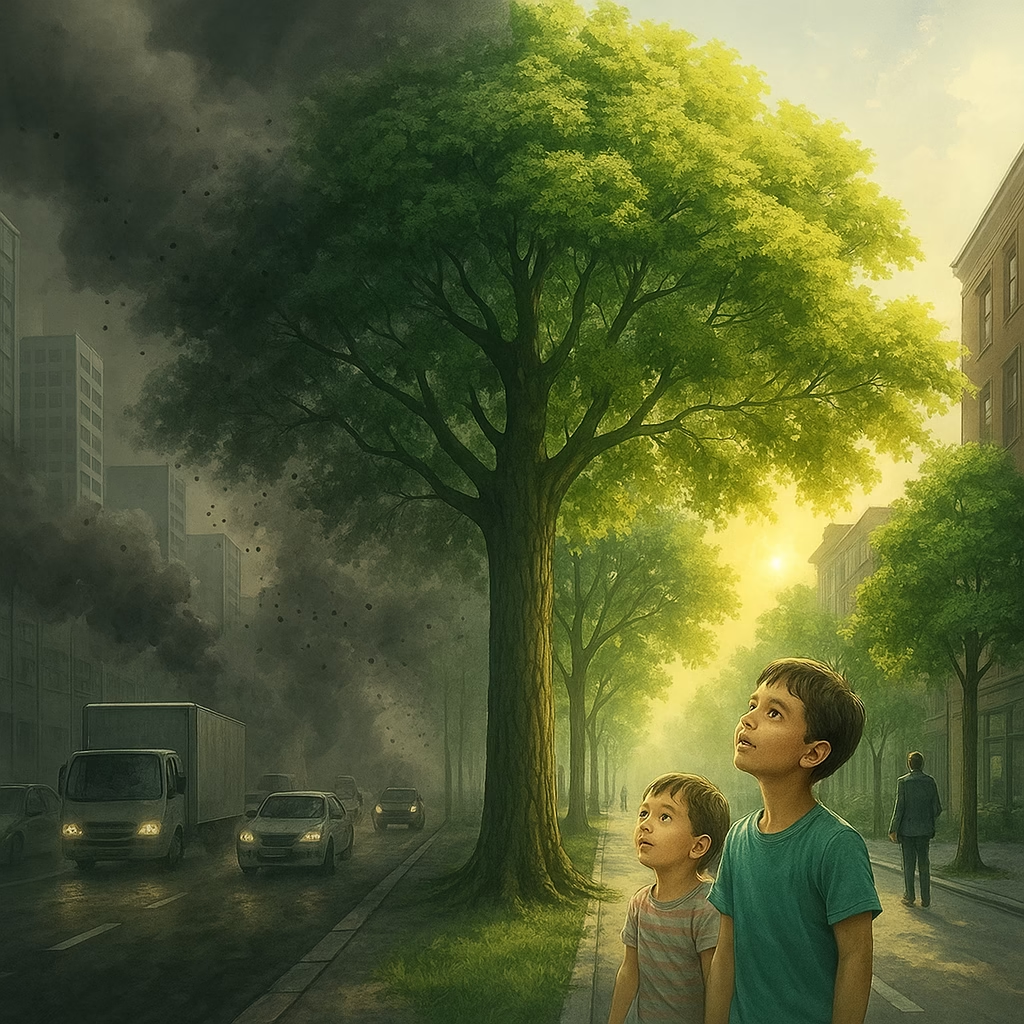
🌫️ The Invisible Fight Against Particulate Matter (PM)
Amid the invisible currents of air swirling through our cities and countryside, a quiet battle rages. Particulate matter (PM)—microscopic yet mighty—moves unseen but is deeply felt. These fine specks, suspended in the air as solid or liquid particles, slip into our lungs with every breath. Yet, in this battle, nature stands ready—through the steadfast guardianship of vegetation and its role in greenspace and air quality.
The Journey of PM: From Emission to Removal
Particulate matter appears in many forms. PM₂.₅, smaller than 2.5 microns, is especially dangerous—able to burrow deep into lung tissue and enter the bloodstream. PM₁₀, though slightly larger, still irritates airways and contributes to respiratory distress. These particles stem from vehicle exhaust, industrial emissions, construction dust, and wildfires—an airborne army sweeping through human habitats.
When PM drifts into the green domain of trees and plants, the story begins to shift. Leaves, stems, and even bark become natural filters. These surfaces trap PM, where wind and rain later wash the particles away. Trees with waxy or hairy leaves—like pines and oaks—excel at this task, standing as sentinels at the threshold of the air.
The Resilience of Urban Trees
In London, urban trees remove about 90.4 metric tons of PM₁₀ every year—an invisible service that reduces hospital admissions and saves lives. In Atlanta, where PM pollution is severe, trees collectively remove 64.5 metric tons annually. This quiet labor yields millions of dollars in health benefits, silently protecting communities, one breath at a time.
Yet not all vegetation works the same way. In dense urban canyons, thick canopies can trap PM beneath them, hindering dispersion. In these cases, low-lying greenery—such as shrubs along roadsides—serves as a better defense, intercepting particles at pedestrian level and reducing exposure.
The Complex Relationship Between Plants and PM
Vegetation offers another layer of protection by absorbing PM and associated gaseous pollutants through leaf stomata. As air passes over and through, some particles are absorbed or chemically transformed. However, this process is not without nuance. Certain particles may only rest briefly on leaves—especially in dry, windy conditions—before becoming airborne again.
This battle against PM is a reminder of nature’s intricate choreography. Every leaf, every root, every stretch of green space forms an unyielding line of defense. Together, trees, shrubs, and grasses purify the shared air—and shape the long, quiet story of greenspace and air quality.
🌬️ The Delicate Dance of VOCs and Ozone
In the complex chemistry of our atmosphere, trees and vegetation perform a dual role. At times, they purify the air; under certain conditions, however, they can also contribute to pollution. This paradox lies at the heart of understanding greenspace and air quality—and centers around volatile organic compounds (VOCs) emitted by plants and their connection to ground-level ozone (O₃).
🌿 Understanding VOC Emissions
Plants release VOCs for several reasons: attracting pollinators, deterring pests, and adapting to environmental stress. Common compounds like isoprene and monoterpenes—responsible for the fresh scent of pine forests—are also found in many essential oils. Yet, when these VOCs mix with nitrogen oxides (NOₓ) under sunlight, they can trigger chemical reactions that create ozone. While ozone high in the stratosphere shields us from ultraviolet rays, ground-level ozone is a harmful pollutant that worsens respiratory illness and disrupts ecosystems.
🏙️ Urban Greenery and Complex Chemistry
In cities where NOₓ emissions from vehicles and factories are high, VOCs released by trees can accelerate ozone formation—especially in warm conditions. High temperatures increase VOC emissions, raising the risk. This makes species selection critical in places like Los Angeles, where industrial activity and urban greenery coexist. Trees such as oaks, poplars, and eucalyptus, which emit high levels of VOCs, may unintentionally contribute to smog under the right conditions.
🌱 Choosing Low-VOC-Emitting Trees
To reduce this risk, many cities now prioritize planting low-VOC-emitting trees. These species help maintain air quality while offering shade and cooling. Trees like maples, birches, and certain pines, which emit less isoprene, provide critical benefits—lowering temperatures, filtering pollutants, and avoiding significant VOC-driven ozone formation.
🌎 Real-World Examples of Effective Planting
In Tokyo, low-VOC-emitting trees are a core part of urban green planning. Carefully selected species have helped lower ozone levels in key neighborhoods. Likewise, London emphasizes a mix of trees—such as plane trees and sycamores—that provide dense canopy coverage while minimizing emissions.
In Chicago, the “Green Streets” initiative promotes native low-VOC-emitting species to improve both cooling and biodiversity. These examples highlight the importance of matching species to local climates and pollution profiles to build healthier, more sustainable greenspace and air quality outcomes.
🔬 The Path Forward
The delicate relationship between VOCs and ozone reminds us that even nature’s allies can have unintended effects. Still, by understanding and managing these interactions, we can continue to harness the cooling and purifying powers of trees—while minimizing ozone formation. The way forward lies in thoughtful species selection, integrated urban planning, and continued research into greenspace and air quality dynamics.hemistry.
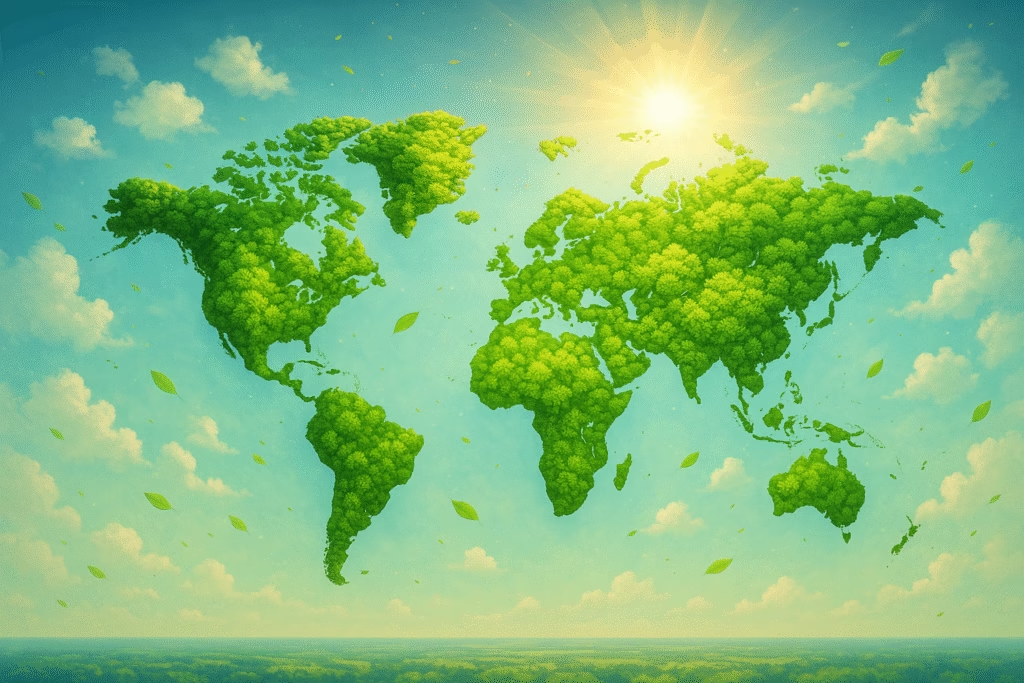
🌍 Greenspace: A Solution with Geographic Nuance
🧭 Context Matters: Geography’s Role in Greenspace Effectiveness
Not all greenspaces are created equal. The effectiveness of vegetation in improving air quality depends not only on the presence of trees and plants but also on the context in which they grow. Geography, climate, and local ecology shape how greenspace and air quality intersect. This geographic nuance weaves a complex, fascinating tapestry—one where each region’s environmental character influences how well greenery can clean the air.
🏞️ The North–South Divide in China’s Greenspace Impact
In China, researchers have observed a stark contrast in greenspace effectiveness between the country’s northern and southern regions. The Qinling–Huaihe line marks this divide. South of the line, humid and warm conditions support year-round dense greenery. Here, greenspaces are more effective in removing pollutants like PM₂.₅, thanks to extended growing seasons and rich, broadleaf canopies.
In contrast, northern China faces colder, drier conditions. Shorter growing seasons and sparser foliage reduce the pollution-cleansing power of greenspaces—especially in winter, when low temperatures limit vegetative cover. This disparity highlights the importance of adapting greenspace and air quality strategies to fit local climates, so their benefits are fully realized.
🌍 Urban Microclimates and the Power of Plant Choice
Geography’s influence doesn’t stop at national borders—it also shapes urban microclimates. In Mediterranean regions, where summers are hot and dry, drought-resistant trees like olive and cypress provide shade without high water demands. Meanwhile, temperate cities like London benefit from deciduous trees that cast wide canopies in summer but let sunlight through in winter, balancing warmth and cooling across seasons.
Local plant choice matters, too. In Southeast Asia, monsoon-fed tropical vegetation thrives, capturing fine particulates and improving air quality. Yet, the same warm and humid conditions can increase VOC emissions from certain species—potentially contributing to ozone formation. Choosing low-VOC-emitting plants becomes vital in such climates to avoid unintended harm.
🌱 Learning from Global Examples
Singapore offers a vivid example of greenspace design attuned to local conditions. In this compact, tropical city-state, vertical gardens, green roofs, and dense tree cover cool the city and clean the air. Native species, adapted to high humidity and rainfall, help maximize environmental benefits without straining water resources.
In arid regions like the American Southwest, strategies such as xeriscaping—using drought-tolerant native plants—help mitigate heat while conserving water. These region-specific solutions show that effective greenspace planning must be climate-conscious and ecologically grounded.
🗺️ The Importance of Localized Strategies
All of this points to a fundamental truth: context matters. While trees and vegetation universally aid air quality, their effectiveness depends on where and how they grow. For urban planners and policymakers, this means considering local climate, soil, species, and community needs when designing green initiatives. By doing so, cities can ensure that every leaf counts—purifying the air, cooling the streets, and reshaping lives where greenspace and air quality meet with purpose.ithin.
🔬 Empirical Evidence and Methodological Challenges
Understanding the relationship between greenspace and air quality requires a scientific journey—one built on data, models, and analysis. While the benefits of vegetation in reducing pollution are widely acknowledged, producing concrete empirical evidence remains a challenge. Scientists must navigate this complex terrain with both precision and care.
Data Collection Complexities
Accurate data collection is the backbone of any greenspace study. Researchers must measure multiple variables—pollutant concentrations (such as PM₂.₅, PM₁₀, NO₂), greenspace coverage, meteorological factors, and local emission sources. Yet, collecting consistent and representative data is far from simple.
Air pollution varies by time of day, weather, and human activity. The effects of greenspace shift with the seasons—especially in places with harsh winters or prolonged dry spells.
Moreover, the scale of data collection can be daunting. Air quality across vast regions is often tracked by only a few sensors, leaving gaps in coverage. Satellite imagery helps track vegetation, but it may miss fine-scale features such as canopy density, species diversity, or the influence of surrounding infrastructure. Together, these gaps make it difficult to build a dataset that reflects real-world variability.
Modeling Greenspace Impacts
To overcome data limitations, scientists often turn to simulation models that estimate how greenspace interacts with air quality. These models combine inputs on pollution sources, weather, and vegetation traits to forecast outcomes under different scenarios.
However, modeling introduces new challenges. The interactions between plants and pollutants—uptake, resuspension, chemical transformation—are complex. A single model may contain several sub-models, each with its own parameters and assumptions. For example, estimating how much PM a tree intercepts may depend on the leaf area index, tree species, or wind speed—all variables often derived from lab studies that might not reflect outdoor conditions.
As a result, these models offer important insights—but they remain simplified portraits of a far more intricate reality.
Controlling for Confounding Variables
Another critical hurdle is controlling for confounding factors. Urban areas with more greenspace might also enjoy higher socioeconomic status, which can correlate with lower emissions due to reduced industry or cleaner transportation. If these variables aren’t accounted for, we risk misattributing effects to greenspace alone.
To address this, researchers apply statistical tools like fixed-effects models or instrumental variable (IV) techniques. In China, for instance, studies have used soil humidity and historical vegetation indices to untangle these relationships. While helpful, such techniques carry their own assumptions and must be tested rigorously for accuracy.
The Path Forward: Balancing Precision and Practicality
Despite these obstacles, research on greenspace and air quality continues to guide planners, policymakers, and public health advocates. By acknowledging limitations in data collection, modeling, and causality analysis, scientists are steadily refining our understanding.
Looking ahead, innovations in remote sensing, data integration, and model accuracy promise clearer answers. And with better insights, cities can shape healthier, greener environments—where evidence and action meet beneath the branches of intention.
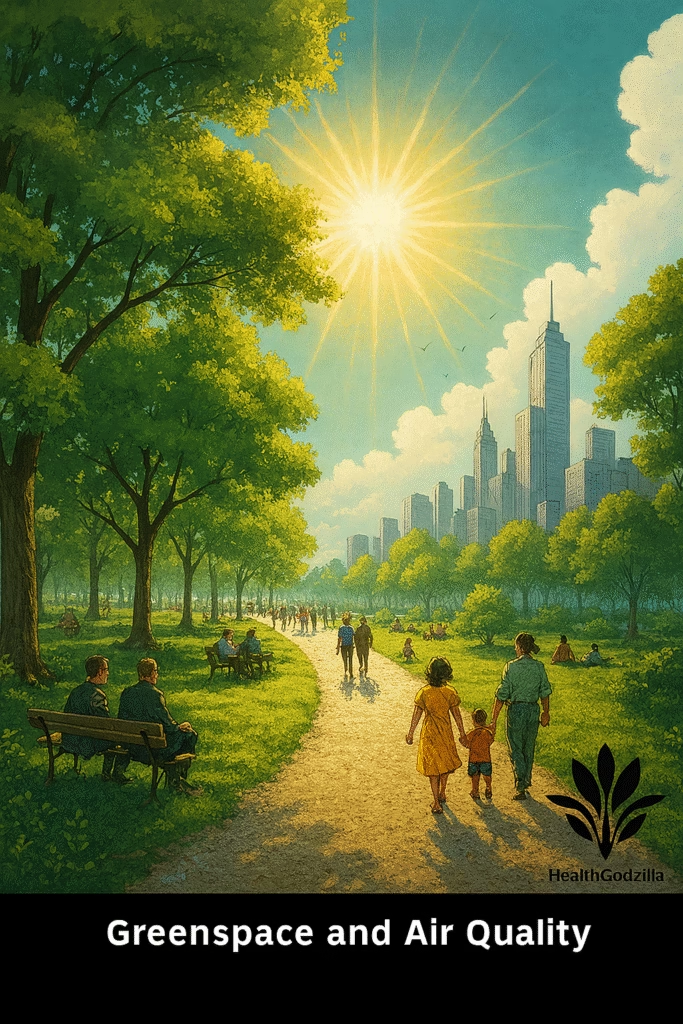
💰 Greenspace Economics and Community Engagement: Transforming Health and Society
When we imagine nature’s gift of fresh air, serene forests and tree-lined parks often come to mind. Yet beyond their beauty, greenspace and air quality are tightly linked—green spaces carry immense economic power. Acting as natural infrastructure, they save lives and reduce public health costs—beginning with something as simple as a single leaf capturing pollution.
Across the United States, urban trees work tirelessly, filtering pollutants like particulate matter (PM₂.₅ and PM₁₀), sulfur dioxide (SO₂), and ozone (O₃). In 2010 alone, trees and forests across the continental U.S. removed 22.4 million tons of air pollution—resulting in $8.5 billion in human health benefits.
The impact is especially pronounced in densely populated cities, where pollution levels and health risks are high. For instance, in New York City, trees removed 64.5 tons of PM₂.₅, leading to fewer hospitalizations, improved respiratory health, and estimated annual healthcare savings of $60.1 million.
In urban neighborhoods, the effects of green spaces can be transformative. Trees don’t just clean the air—they cut down medical expenses, reduce productivity losses, and extend lifespans. While rural areas may see a lower per-ton monetary return due to fewer residents, the cumulative health and ecological benefits remain substantial.
These gains ripple outward. Green space improvements foster community resilience, reinforce environmental justice, and inspire policies that value equity, access, and participation. The link between public health and urban greenery isn’t just statistical—it’s structural, economic, and deeply human.
🤝 Community as the Heart of Greenspace Initiatives
Communities are the lifeblood of greenspaces—both as stewards and beneficiaries. In neighborhoods with limited green areas, grassroots efforts like urban gardening and park revitalization turn neglected lots into vibrant oases.
These transformations bring cleaner air and a renewed sense of purpose. They also strengthen social cohesion—giving neighbors common ground, literally and figuratively. One vivid example is South Central Farm in Los Angeles, where residents created a thriving urban farm offering fresh produce, cultural connection, and environmental health—all within a dense cityscape.
🏛️ Policy as an Enabler of Lasting Change
While grassroots energy lights the way, policy sustains the journey. Long-term green space development depends on robust frameworks that support community action and address systemic inequality.
Effective policies acknowledge that greenspace solutions are not one-size-fits-all. They must be tailored to urban diversity—especially for low-income and underserved areas that face the worst effects of air pollution.
Strategic investments in green infrastructure—from tree planting to green roofs—can reduce health disparities and restore environmental balance. New York City’s “MillionTreesNYC” initiative is one such effort, focusing on vulnerable neighborhoods to amplify health benefits and push back against environmental injustice.
Yet policy must also speak the language of culture. Designing green spaces that reflect local traditions deepens engagement and fosters belonging. Support can come through public funding, technical assistance, and programs that empower residents to become caretakers of their environment.
🌿 Engaging the Next Generation
Education and youth involvement are vital for sustaining the future of greenspace initiatives. School-based programs that emphasize environmental stewardship and the health benefits of nature can spark curiosity—and raise a new generation of advocates.
By connecting students with nature through outdoor classrooms, school gardens, and hands-on projects, communities plant more than just seeds. They cultivate a lifelong appreciation for green environments and the ecosystems we share.
🌎 A Shared Vision for a Healthier Society
Greenspaces have the power to transform both the air we breathe and the lives we live. When communities are empowered, when policies are thoughtful, and when disparities are addressed with care—trees become more than scenery. They become instruments of public health, resilience, and social equity.
By investing in trees and greenery, we strengthen not only lungs and landscapes, but also trust and togetherness. This shared vision—rooted in community voices, cultural wisdom, and supportive policy—can shape greener, healthier, and more inclusive environments for generations to come.
🌱 Narratives from Nature: Real-Life Impact Stories
The story of greenspace is one of quiet transformation—where communities breathe new life into their cities, and nature, in turn, breathes back. Around the world, stories of thoughtful green space management offer not just hope, but tangible proof that the power of greenery stretches far beyond aesthetics. Each leaf, root, and branch works tirelessly—cleaning the air, restoring vitality, and reshaping the spirit of place.
The Revitalization of Medellín, Colombia
How did Medellín, once a name tied to violence and urban decay, become a symbol of green innovation? A key answer lies in its bold greenspace strategy. The city’s “Green Corridors” project transformed roadsides, riverbanks, and hillsides into lush pathways filled with native trees and shrubs.
These corridors reduced urban heat, improved air quality, and lowered temperatures by up to 2°C in some neighborhoods. The result? Quieter streets, cleaner air, and renewed public spaces that foster social connection. Medellín’s transformation is a testament to how green infrastructure can redefine a city’s identity and heal its past.
A Breath of Fresh Air in Milan, Italy
In Milan, where air pollution once loomed large, a vertical solution reached toward the sky. The “Bosco Verticale”, or “Vertical Forest,” is a pair of residential towers wrapped in more than 20,000 trees and plants, forming a living greenspace in the heart of the city.
This vertical oasis absorbs CO₂, filters PM₂.₅, supports biodiversity, and reduces noise pollution—all while improving urban life. The project stands as a beacon of how architecture and ecology can converge, inspiring cities worldwide to weave nature into their skylines.
Greenspaces as a Healing Force in Chicago’s South Side
In neighborhoods long underserved by infrastructure, residents and nonprofits have worked hand-in-hand to reclaim vacant lots—transforming them into parks, gardens, and tree-lined streets.
These community-led efforts have reduced air pollution, created safe gathering spaces, and improved mental and physical health. Studies show lower rates of respiratory illness and stress—proving that even modest interventions can carry profound impact when rooted in local hands.
India’s Green Belt Movement for Cleaner Air
In the megacities of India, air pollution poses an escalating threat. In response, Delhi’s “Green Belt” initiative mobilized citizens and the state to plant millions of trees—along roads, around factories, and within urban parks.
This collective push has already shown results, with measurable reductions in PM levels and improved respiratory health among residents. Despite challenges, the movement reveals how civic resolve and ecological thinking can align to reclaim the air.
The Legacy of Singapore’s “City in a Garden” Vision
Over decades, Singapore has steadily transformed into a “City in a Garden.” Through vertical gardens, broad parks, and green-lined roads, the city has built an interconnected greenspace network that cools and purifies.
Air quality has significantly improved, with PM₂.₅ reductions linked to lower inflammation levels in health studies. Singapore’s long-term, strategic planning serves as a model—showing what becomes possible when policy, people, and nature move in harmony.
🌍 A Shared Future of Transformation
These narratives remind us: greenspaces are not decorative—they are lifelines. They clean our air, quiet our cities, and heal wounds both visible and unseen. With thoughtful planning, deep-rooted community engagement, and enduring commitment to green infrastructure, we can continue building cities not just to live in—but to breathe in.
As we look ahead, one truth becomes clear: the next chapter of urban green development will be written by those who dare to imagine strategic, equitable, and regenerative designs—where nature is not a luxury, but a necessity.
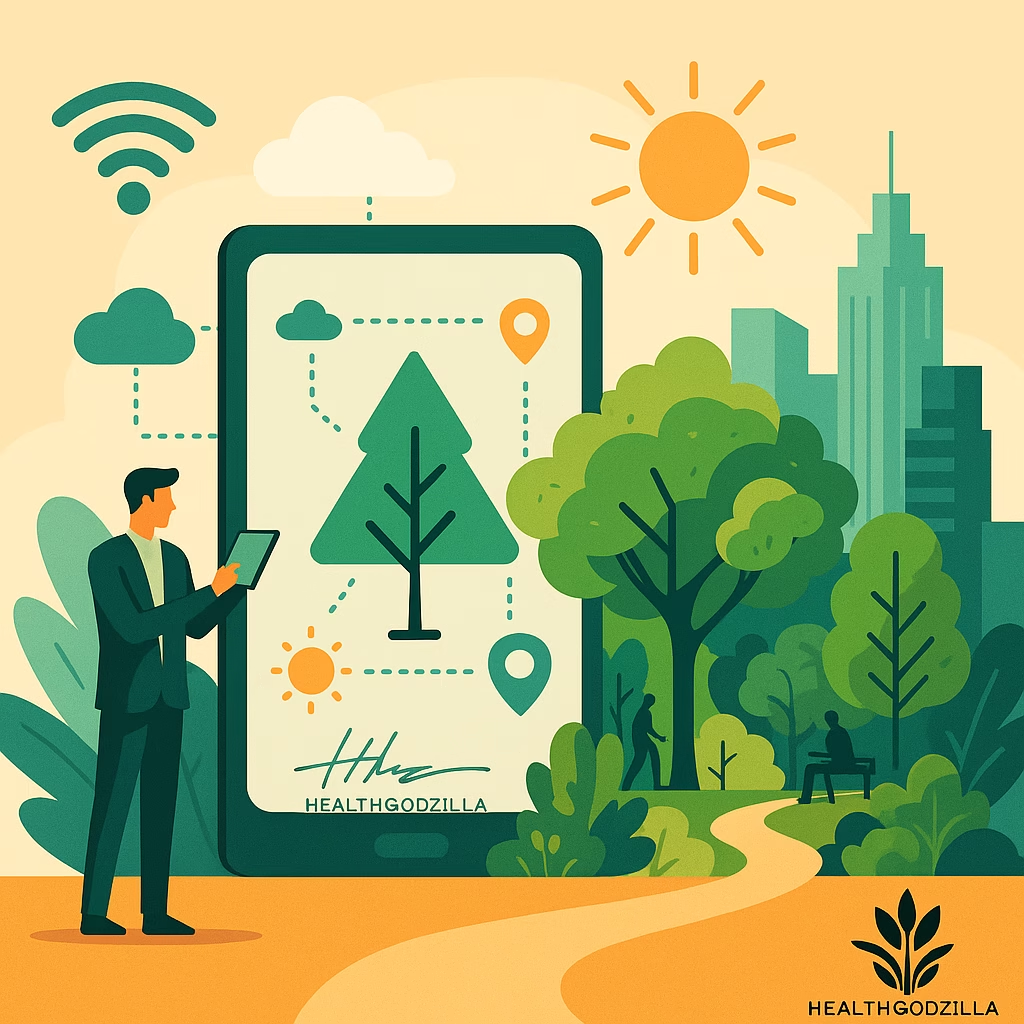
🏙️ The Future of Green Urban Planning and Innovations in Greenspace Technology
Cities around the world are evolving—and so is the way we weave greenspace into urban life. As air pollution, climate change, and rapid urbanization intensify, forward-thinking strategies are no longer optional—they’re essential.
Emerging trends and innovative technologies are reshaping how we envision, build, and sustain greenery at the heart of our urban landscapes.
🌿 Green Rooftops and Vertical Gardens: Building Upward for a Greener Tomorrow
In densely populated cities, where space is limited and demand for greenery often exceeds supply, solutions have turned skyward. Green rooftops—lush oases perched atop buildings—are rising globally.
These living roofs absorb carbon dioxide, filter particulate matter, cool urban heat, reduce stormwater runoff, and create habitats for birds and pollinators. Cities like Copenhagen and Toronto now encourage—or mandate—green roofs for new buildings, transforming once-barren rooftops into vibrant ecosystems.
Similarly, vertical gardens convert building facades into living walls. These structures not only purify the air and lower surrounding temperatures but also embody the harmony between architecture and ecology. In Singapore, a pioneer in vertical integration, such gardens are key to the city’s enduring “City in a Garden” vision.
🧭 Digital Mapping and Greenspace Optimization
Technology is transforming not just how we grow greenspaces—but how we plan them. Tools powered by geographic information systems (GIS) and remote sensing data now allow urban planners to assess where green interventions are most needed—and most effective.
By layering data on pollution levels, population density, and climate conditions, cities can precisely target where greenery will make the biggest impact. In Los Angeles, digital mapping has spotlighted neighborhoods suffering most from heat and air pollution, guiding equitable tree-planting efforts to those in greatest need.
These platforms also foster community engagement. Cities are using interactive tools and data-sharing platforms to invite residents into the planning process—ensuring that greenspace development is not just top-down, but collaborative.
💧 Smart Irrigation: Sustainability in a Thirsting World
Sustaining urban greenery in an age of climate unpredictability and water scarcity is no longer just a challenge—it’s a defining test of resilience. Smart irrigation systems, guided by sensors, real-time analytics, and weather forecasting, are quietly redefining how we care for urban nature.
By adjusting water flow based on soil moisture, plant needs, and climatic variation, these systems ensure that every drop of water counts. They prevent overwatering, reduce waste, and promote healthy, sustained growth—even during prolonged drought.
In drought-prone regions, this precision approach stretches scarce resources while keeping trees and plants alive. In dense urban zones, where heat islands intensify and greenery often competes with concrete, smart irrigation minimizes runoff, curbs utility costs, and supports year-round green maintenance.
Whether perched on rooftops or shading playgrounds below, greenspaces now drink thoughtfully—aligned with both nature’s needs and technology’s guidance. Cities that embrace this approach aren’t just managing water—they’re planting a future that adapts, heals, and endures.
🌱 A Vision of the Future: Integrating Nature and Technology
The future of green urban planning lives in the marriage of resilience and ingenuity. With vertical gardens, digital mapping, green rooftops, and intelligent maintenance, cities are beginning to treat nature not as an afterthought—but as infrastructure.
This is not a collection of isolated innovations. It is a holistic shift—one that envisions cities where air is filtered by leaves, where walls breathe, and where planning listens not just to data, but to wind and root.
It is a future where every breath carries the subtle, persistent whispers of a sustainable world in bloom.
🍂 Hello, Artista

Organum adjusted his chair, careful not to disturb RD and MD, curled like commas near his feet. Outside, Boston’s dusk painted the trees in silhouette—each branch a soft exhale against the humid air. He reached for his notebook, pages filled with marginalia: sketches of airflow, VOC equations, and a small doodle of a pine tree smiling.
“Isn’t it something, Artista?” he mused into his phone. “Greenspaces don’t just clean the air. They stitch together everything—pollution, policy, plant physiology, even peace. The science is meticulous, yet it hums like a lullaby.”
Far away in Vancouver, Artista poured a second cup of mint tea, watching Brownie stretch beside the planter of lemon balm. Whitee twitched her ears, listening to distant gulls. “They’re not just lungs of the Earth, Organum,” Artista replied, her voice as warm as the steam rising from her mug. “They’re the storytellers—trees, I mean. Each leaf carries yesterday’s sorrow and tomorrow’s promise.”
She paused. “Sometimes, I think a tree knows when we’re listening. And other times, it just goes on being a tree—patient, green, forgiving.”
Organum smiled. “That’s why you’re the melody in this conversation.”
“And you’re the microscope that sees the symphony in the cell,” she teased.
The air between them carried no urgency—only understanding. Somewhere, a child planted a seed. Somewhere else, an old man sat beneath a banyan, his breathing steadier in the shade.
And in these soft moments, stitched across cities and time zones, they knew: to speak of greenspaces is to speak of breath, memory, and the quiet revolution of leaves.
✍️ Author’s Reflection
I have walked the boundary where trees and smokestacks stare at each other—one rooted, one restless. Moreover, I have wondered: who listens more—those who speak of clean air, or those who plant it?
This article is not an answer. Instead, it is a breath I traced through corridors of green, across concrete veins, beside children playing beneath rustling leaves. I did not walk alone. For instance, Kimiya hummed in chemistry’s caution. Organum mapped reason with soil beneath his nails. Artista lifted a hand toward the sky—not to measure pollution, but to feel it settle on her skin.
Sometimes, cities are louder than storms; however, a single tree can hush them. Additionally, sometimes data shows danger—but it is the grandmother planting tulsi in a tin can who shows healing.
I wrote this not to praise trees as saints, nor to warn as prophets, but to listen. In other words, to hear the quiet work of greenspace—the kind you can’t graph, but you feel when your chest expands just a little more.
Ultimately, I remember what we often forget: the best kind of air is the kind you don’t notice. After all, it doesn’t hurt. And when I wrote this, I was not alone. Indeed, others spoke, and I listened.
—Jamee
🌼 Articles You May Like
From metal minds to stardust thoughts—more journeys await:
- How Labels Affect Self-Esteem: Are we truly what they say we are? A lakeside conversation of names, masks, and the quiet rebellion of the soul.
- Impact of Air Pollution on Plants: Leaves Bear Scars of Our Progress The green lungs of cities speak—chloroplasts and silence battling the unseen.
Curated with stardust by Organum & Artista under a sky full of questions.
📚 Principal Sources
- Ai, H., Zhang, X., & Zhou, Z. “The impact of greenspace on air pollution: Empirical evidence from China.” School of Economics and Trade, Hunan University, Changsha 410081, Hunan, China. Retrieved from https://www.sciencedirect.com/science/article/pii/S1470160X23000237
- Nowak, D.J., Hirabayashi, S., Bodine, A., & Greenfield, E. “Tree and forest effects on air quality and human health in the United States.” USDA, Forest Service, US Department of Agriculture, 2014. Retrieved from https://research.fs.usda.gov/treesearch/46102
- World Health Organization (WHO) & Secretariat of the Convention on Biological Diversity. “Connecting global priorities: biodiversity and human health: a state of knowledge review.” ISBN 978 92 4 150853 7, 2015. Publications are available from WHO Press, World Health Organization, 20 Avenue Appia, 1211 Geneva 27, Switzerland. Available at www.who.int

Leave a Reply